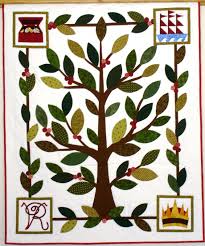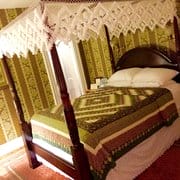The power of dreams
Martha's story

Today, after three centuries, in the brief history of the United States the word slavery is still alive and well, and racism goes accordingly. It is a terrible reality and a good Oscar movie is not enough to bring people to forget.
This short tale is dedicated to the story of a black woman. Her name is Martha Ann Richs. There are official photos of her in adulthood and we can look at her dressed in black, always wearing a hat, a style that belongs to the 800s.
She was born in Tennessee in 1817 and there was no way out for her, she was an African American and her life as a slave was marked.
Tennessee is one of the land-locked southern states, far from the Atlantic Ocean, an attraction for the lush nature, the important National parks and mountains, but it is certainly more famous for music. (Nashville, the blues, Elvis Presley)
Martha’s father, George Erskine, was a special and very gifted man. He didn’t want to die a slave nor did he want it for his wife and children. He had memorized the Bible by listening to the readings in the local Church, he had learned to read this way and had become so good that they allowed him to preach and organize the songs of the functions.
The abolition of slavery, the 13th amendment was still far away, but in some southern states there was a way out, you could pay for freedom. And in Tennessee the whites were not all slavers.
Thus by saving penny after penny he could redeem his family and bring everyone to Liberia, the new African state on the Atlantic coast, created specifically to welcome black Americans, ex-slaves who would have lived here for free.
From the age of twelve, Martha lived in Liberia, where she continued to practice sewing skills learned from her mother and grandmother, becoming increasingly good at it and acquiring a good reputation in the field of quilting. On market days she went to the seaside and in the distance she could distinguish the ships of the English fleet that patrolled the coasts defending them from the attacks of slave ships still in activity. The slave market was and still is popular today and has its own diehard fans.
Martha felt safe now and thought that she somehow had to thank the Queen, who in some way contributed to their defense. She knew that her Majesty acknowledged and appreciated sewing. She started working on her plan, saving every penny, as she had seen her father do, in order to reach England, visit the Queen and bring her work as a gift, a quilt.
Liberia is a small state and this project soon became something to talk about. Many people made fun of her because the years passed by and she was still there. Everyone though that Martha Ann’s dream would remain only a dream, until it came to the ears of the widow of the President of Liberia, and after seeing her work she decided that she would help Martha realize it.
With the help of the Liberia Ambassador in Great Britain she succeeded in obtaining a meeting with the Queen. Martha was now 76 years old and by paying him with all her savings she embarked on a journey of 3,550 miles to far England.
On 16 July 1892, she met Victoria at Windsor Castle. The two women shook hands and talked. There are drawings and photographs, reported in newspapers, which testify the event.
The queen was very impressed by that woman so simple but so full of history and knowledge of the living conditions of African-Americans who survived slavery.
Most of all she was moved by seeing the quilt that Martha had brought her as a gift.
Preserved in a museum there is a drawing in black and white that reproduces the scene in which the queen, together with her court, welcomes Martha who shows up with her quilt wrapped in a sheet under her arm.
The background of the quilt was white satin and a coffee plant was shown. Martha’s garden was full of them: the branches of the plant were made of appliqué and around them, which were already numerous, were 300 leaves and as many red colored berries made with the same technique and on the external edge, particularly detailed, other leaves, twigs and berries .
There is a short BBC documentary “Martha the Queen and the Quilt” which shows with a nice animation the brief history of the meeting and the quilt that in this version is quilted in all its breadth and decorated on the edges by the fruits of passion. It is a novelty , until then there had never been showed so many variants of leaves. The coffee plant was the symbol of Liberia and represented its economic security and Martha’s garden was full of them.
This quilt was later considered an example of the innovation made by African Americans in quilting and the story of Martha, of her father’s struggle for freedom from slavery along with his dream come true, became almost a symbol of women’s emancipation for all African Americans still in the USA: it raised a renewed attention towards them (the original Quilt unfortunately disappeared but it was exhibited in the USA and there are numerous copies of it)
Martha returned to Liberia laden with gifts and with a royal escort. Among these gifts there was also a work by the Queen herself as testimony of something they shared, the love for independence and the need to express themselves through a work of needle and thread.
They would have died the same year, in 1901.
To tell this beautiful story it would take more pages and other words . Certainly Martha Ann’s life was not easy, I overlooked details of her private life because she was married and how she lived the last years of her life, they didn’t seem like emblematic events as is her desire to do something to be remembered by. Certainly in recent years she would have been in the front row, we would have seen her fight for emancipation and for equal rights for women, not just black ones.
Tullia
March 2019




